Pokémon in South Korea
| Pokémon in South Korea | |||||
|---|---|---|---|---|---|
| |||||
| Language | Korean | ||||
| Continent | Asia | ||||
| Original animated series airdates | |||||
| EP001 | July 14, 1999 | ||||
| AG001 | July 21, 2003 | ||||
| DP001 | September 10, 2007 | ||||
| BW001 | May 16, 2011 | ||||
| XY001 | March 10, 2014 | ||||
| SM001 | December 20, 2016 April 4, 2017 | ||||
| JN001 | April 8, 2020 | ||||
| HZ001 | August 23, 2023 | ||||
The Pokémon (포켓몬스터, officially abbreviated as 포켓몬) franchise first reached South Korea in 1999, with the first airing of Pikachu, I Choose You! on the Seoul Broadcasting System. None of the first generation Pokémon games were released in South Korea, so it was not until the release of Pokémon Gold and Silver in 2002 that Pokémon games were released in South Korean stores.
History
Due to the rocky history between Japan and (South) Korea, Japanese cultural imports—such as manga, anime, video games, music, and movies—were banned by the South Korean government after Korean independence at the end of World War II. This ban would be in effect throughout most of the 1980s and 1990s, particularly when video game consoles began to grow in popularity in Japan and the West. Many Korean companies would find ways around the ban, such as licensing American versions of Japanese consoles; Hyundai Electronics, for example, licensed the American Nintendo Entertainment System (instead of the Japanese Famicom) and released it as the 현대 컴보이 Hyundai Comboy. However, for other things, including Pokémon, there was no way around the ban; almost all Pokémon-related media of this time period would never officially make its way into South Korea. This included all of the first generation games; if anything Pokémon-related appeared in Korea, it was either a bootleg, a rip-off or an illegal version.
Eventually, South Korean and Japanese relations had warmed up to the point where the South Korean government's ban on Japanese cultural imports was partially lifted in October 1998[1]. This in turn finally allowed for the release of some Pokémon titles in South Korea. In particular, the Pokémon animated series first appeared on Korean television on July 1999, while the Pokémon manga series, Pokémon Adventures (포켓몬스터 스페셜 Pocket Monsters Special), was released on August 1999. The first Korean-language core series game would be Pokémon Gold and Silver (포켓몬스터 금·은 Pocket Monsters Geum·Eun), which saw a release in April 2002 by 대원씨아이 Daewon C.I.; its delay may have been due to the difficulty of including the Korean language writing system in it. The game also came in a clear cartridge as opposed to the regular Game Boy-compatible cartridges. However, neither Pokémon Crystal nor the third generation games would see a localized release in South Korea, potentially for the same difficulties involved in translation. There may have also been uncertainty on how to play those games, as Hyundai did not license a version of the Game Boy Color or Game Boy Advance for release in Korea. However, Daewon C.I. imported the Japanese version of Pokémon Ruby and Sapphire in South Korea under the title 포켓몬스터 루비·사파이어 Pocket Monsters Ruby·Sapphire; while the back cover and a short game manual were translated into Korean, the rest of the game remained in Japanese[2].
In January 2004, the South Korean government completely lifted its ban on Japanese cultural imports[3], allowing Nintendo to officially operate in South Korea as 한국닌텐도(주) Nintendo of Korea, Inc. starting in July 2006[4]. 포켓몬코리아 Pokémon Korea, Inc. would begin its operations a month later[5]. Despite this, Daewon C.I. still imported Pokémon Diamond and Pearl as 포켓몬스터 다이아몬드·펄 (Pocket Monsters Diamond·Pearl) in Japanese with Korean covers in 2006, just as they did with Pokémon Ruby and Sapphire[6]. Daewon C.I.'s release was followed by the January 2007 release of the Nintendo DS Lite, which was the first Korean-language console officially released by the new Nintendo of Korea. In February 2008, Pokémon Diamond and Pearl (포켓몬스터 DP 디아루가·펄기아 Pocket Monsters DP Dialga·Palkia) was released, being the first first-party Korean-language game released. However, it would not be until the release of Pokémon Black and White (포켓몬스터 블랙·화이트 Pocket Monsters Black·White) in 2010 that Korean games would be completely compatible with games from other regions (as Generation IV cartridges from other regions lack Korean characters).
Since its official release, Pokémon has enjoyed considerable success in South Korea. Releases in Korea have been able to keep pace with Japan and the rest of the world; Korean-language editions of Pokémon Adventures volumes are generally released in Korea before English editions in North America, new TCG sets are released on par with international releases, and starting with Pokémon X and Y (포켓몬스터 X・Y Pocket Monsters X·Y), core series games have been released in South Korea at the same time as the rest of the world, with Korean as a language option in all regions. Furthermore, 이현정 Lee Hyun-jung is a Korean employee of Game Freak who designed Tepig, Pignite, and Emboar, aa well as illustrating a number of cards for the Pokémon TCG. In 2014, the Video Game Championship, Masters Division winner was 박세준 Park Se-jun, the first Korean winner of a Pokémon Worlds event.
Similarities to foreign versions
The Pokémon franchise in South Korea is a mix of those released in Japan and North America, and is also uniquely Korean.
Currently, the Korean franchise tends to mirror that of Japan, in the same way the European franchise mirrors that of North America. Some Korean Pokémon names and NPCs are translations or transliterations of their Japanese names; Sylveon's Korean name 님피아 Nimpia is based on the Japanese ニンフィア Nymphia rather than its Western name. Furthermore, event Pokémon distributions in Korea tend to follow similar events in Japan rather than those in Europe and the States; the Japanese Year of the Dragon event was also available in Korea, but was never released in the West. Finally, like the Japanese versions, the "포켓몬스터" logo used on every game changes with each generation, instead of using the same "International Pokémon" logo used in the West.
Other times, it mirrors North America; for example, both the front and back card design for the Pokémon TCG in Korea is based on the North American version of the game. Also, when Ruby & Sapphire was released, the Korean version (as depicted in Pokémon Adventures) tended to use English names for Pokémon. For example, Taillow and Swellow's Korean names are transliterated from English (테일로 Teillo and 스왈로 Seuwallo, respectively), as was Delcatty (델케티 Delketi).
Most of the time, however, Pokémon in South Korea has a unique Korean look and feel. Many Pokémon have names unique to Korea, like Kecleon (켈리몬 Kellimon), Leavanny (모아머 Moameo), and Helioptile (목도리키텔 Mokdorikitel), while many of the main characters in the Pokémon franchise are given specifically Korean names: Ash Ketchum is 한지우 Han Ji-woo, Jessie and James are 로사 Rosa and 로이 Roy, respectively, and Lance is 목호 Mokho.
For more information on these translated names, see list of Korean Pokémon names.
Pokémon video games
Due to the South Korean government's ban on Japanese cultural items, none of the first generation games saw an official release in Korea. Once the ban was slightly lifted in 1998, a Korean-language version of Pokémon Gold and Silver (포켓몬스터 금·은 Pocket Monsters Geum·Eun) would be released in 2002. Unlike previous localizations of Pokémon Gold and Silver, these versions are not playable on the original Game Boy at all, and display an incompatibility message if inserted into an original Game Boy, like Pokémon Crystal[7]. For unknown reasons, Pokémon Crystal was never released in the Korean language, although it may be of note that the Game Boy Color's lifespan overseas was almost finished. Likewise, none of the third generation would see a South Korean release either. It wouldn't be until the 2018 release of Pokémon: Let's Go, Pikachu! and Let's Go, Eevee! that Koreans would be able to play an official Korean-language version of the original story that appeared in Pokémon Red and Green, albeit as a remake.
Since February 2008, all of the fourth generation main series games have been released in South Korea. Several of the spin-off Pokémon games have been released in South Korea as well. The fifth generation games would see a release in 2011, and Pokémon X and Y were released in Korea at the same time as the rest of the world, which has continued with all core series games since.
The Korean version of Super Smash Bros. Brawl contains unique voices for most of the Pokémon characters, like Pokémon Trainer and Lucario. Pokémon without unique cries retain their cries from the game's Japanese version.
Events
Local events have been occurring often in South Korea since the release of Pokémon Diamond and Pearl. The events are usually announced on the Korean Pokémon website. With the release of Pokémon Black and White, there has been both an official Korean version of the Pokémon Global Link as well as various Wi-Fi competitions, both International and Local (Korean).
Pokémon animation
The Korean dub of the Pokémon animated series was first aired on July 14, 1999. It is mainly based on the original Japanese version and has continued to do so, independent from the international versions managed by The Pokémon Company International. Most characters are renamed in the dub; for example, Ash Ketchum is 한지우 Han Ji-woo, Misty is 최이슬 Choi I-seul, and Brock is 웅 Ung.
In South Korea, the Pokémon animated series debuted on SBS. Since then, episodes have aired on Tooniverse, CHAMP TV, Animax, Cartoon Network, ANIONE, and Jei TV.
Special episodes, such as Pokémon Mystery Dungeon: Team Go-Getters Out of the Gate! and Pokémon Mystery Dungeon: Explorers of Time & Darkness, have been dubbed as well.
Unlike the other dubs, the Korean dub has banned 20 episodes so far, including the ones banned in Japan. These banned episodes usually included overt references to Japan and Japanese culture, such as Challenge of the Samurai and The Ninja Poké-Showdown. However, most of these episodes were from the original series, with the last unaired episodes (not counting clip shows like AG120 and DP120 or episodes banned in Japan) being from Pokémon the Series: Ruby and Sapphire: AG055 and AG056. However, that may have been an oversight, as many of the unaired episodes were released on DVD. Episodes EP260 to EP274 were not aired during the broadcast of the original series. No official explanation was given for it; the series went off-air after EP259 on November 27, 2002 and resumed with AG001 on July 21, 2003.
The first two Pokémon movies were released in theaters on December 23, 2000 and August 11, 2001, respectively. All of the movies from the third through the eleventh premiered on television, except for Pokémon Ranger and the Temple of the Sea, which premiered in theaters on July 20, 2006. Following the release of Arceus and the Jewel of Life in theaters in 2009, a movie has received a theatrical release every year since.
To commemorate the 25th anniversary of the Korean dub's debut in 2024, several special projects were announced:
- The first project, Pokémon: Stories from the Johto Region - The Final Chapter (Korean: 포켓몬스터: 성도지방 이야기, 최종장), is a movie consisting of remastered versions of the previously undubbed Silver Conference episodes. It was screened in theaters beginning May 1, 2024.[8] Despite not having been released in Japan, the movie was given a Japanese name (Japanese: ポケットモンスター: ジョウト地方の物語、最終章) in the original name field of the Korea Media Rating Board rating.[9]
- The second project, Pokémon Animation Concert (Korean: 포켓몬 애니메이션 콘서트), is a concert scheduled to be held at the Lotte Concert Hall on May 10, 2024 at 7:30 PM and on May 11, 2024 at 3:00 PM and 7:00 PM. It will feature performances of both some of the Korean opening and ending themes, as well as several pieces from the show's score.[10]
- Two projects were announced as the third project:
- Pocket Monsters: Journey for Dreams (Korean: 포켓몬스터: 꿈을 위한 여행) is a special exhibition and anime store that was held at Lotte Cinema World Tower 7F Cine Park from April 26 to May 19, 2024 from 10:30 AM to 9:00 PM.[11]
- Pocket Monsters Episode: Gold & Silver: Stories from Mt. Silver (Korean: 포켓몬스터 금은편: 은빛산 이야기) is a series consisting of the previously undubbed last 15 episodes of the original series. It was broadcast on JEI TV from August 10 to September 7, 2024, and released on SKbtv VOD beginning August 12, 2024.[12]
Music


|
This section is incomplete. Please feel free to edit this section to add missing information and complete it. Reason: Lacking more information in reference to the music |
- Main article: List of Korean opening themes
- Main article: List of Korean ending themes
Much like the English dub, the Korean dub of the animated series features different openings and endings from that in Japanese. However, many of the songs are directly based on their respective Japanese counterparts, using similar lyrics, style and beat along with sharing the same running time (1 minute and 30 seconds) and debuting episodes.
Several music CDs have been released in South Korea including Pocket Monsters OST (Vol. 1) in May 2000, Pocket Monsters OST (Vol. 2) in December 2000, and Pocket Monsters AG (New & Best) in December 2003.
Cast and crew
Many voice actors and actresses have contributed to the production of the Korean dub of the Pokémon animated series.
Pokémon the Series
지우 Ji-woo (Ash Ketchum) has been voiced by:
- 최덕희 Choi Deok-hyi for the original series, M01, and M02,
- 안현서 An Hyeon-seo for M03-M05,
- 이선호 Lee Seon-ho for Pokémon the Series: Ruby and Sapphire onwards, as well as the movies in the respective series.
이슬 I-seul (Misty) was voiced by 지미애 Ji Mi-ae.
웅 Ung (Brock) was voiced by:
- 구자형 Koo Ja-hyung for the original series and all of the movies until M09,
- 변영희 Byeon Young-hui for Pokémon the Series: Ruby and Sapphire and Pokémon the Series: Diamond and Pearl.
- 김영선 Kim Young-seon for Pokémon the Series: Black & White and Pokémon the Series: Sun & Moon.
- 황창영 Hwang Chang-young for Pokémon: The Arceus Chronicles and Pokémon: To Be a Pokémon Master.
로사 Rosa (Jessie) was voiced by:
- 이선 Lee Seon for the original series and all of the movies until M09,
- 우정신 Woo Jeong-sin for Pokémon the Series: Ruby and Sapphire onwards, as well as the movies in the respective series.
로이 Roy (James) was voiced by:
- 김일 Kim Il for the original series and all of the movies until M09,
- 김영선 Kim Yeong-seon for Pokémon the Series: Ruby and Sapphire onwards, as well as the movies in the respective series.
나옹 Na-ong (Meowth) was voiced by:
- 최원형 Choi Won-hyeong for the original series and all of the movies until M09,
- 박조호 Park Joho for AG001-AG078
- 오인성 Oh In-seong for AG079 onwards, as well as the movies in the respective series.
관철 Gwan-cheol (Tracey Sketchit) was voiced by 이영주 Lee Youngjoo.
봄이 Bom-i (May) was voiced by:
- 서혜정 Seo Hye-jeong for Pokémon the Series: Ruby and Sapphire,
- 지미애 Ji Mi-ae for the original movies M06-M09,
- 김현지 Kim Hyeon-ji for the redubbed movies M06-M09.
정인 Jeong-in (Max) was voiced by:
- 김서영 Kim Seo-young for AG001-AG078 and the original movies M06-M09,
- 문남숙 Moon Nam-suk for AG079 onwards,
- 안영미 An Young-mi for the redubbed movies M06-M09.
빛나 Bitna (Dawn) was voiced by:
- 정미숙 Jeong Mi-suk for Pokémon the Series: Diamond and Pearl and Pokémon Journeys: The Series.
- 김현지 Kim Hyun-ji for Pokémon the Series: Black & White.
아이리스 Iris (Iris) was voiced by 장경희 Jang Kyung-hui.
덴트 Dent (Cilan) was voiced by 남도형 Nam Do-hyung.
세레나 Serena (Serena) is voiced by 김현지 Kim Hyun-ji
시트론 Citron (Clemont) is voiced by 심규혁 Sim Gyu-hyeok
유리카 Yurika (Bonnie) is voiced by 조경이 Jo Gyung-i
릴리에 Lillie (Lillie) is voiced by 윤아영 Yoon Ah-yeong
키아웨 Kiawe (Kiawe) is voiced by 정주원 Jeong Joo-won
마오 Mao (Mallow) is voiced by 김율 Kim Yool
수련 Soo-ryeon (Lana) is voiced by:
- 김하영 Kim Ha-yeong for SM001-SM092
- 강은애 Kang Eun-ae for SM093 onwards and Pokémon Journeys: The Series.
마마네 Mama-ne (Sophocles) is voiced by 송하림 Song Ha-rim
고우 Goh (Goh) is voiced by 송하림 Song Ha-rim
하루 Haru (Chloe) is voiced by 윤은서 Yoon Eun-seo
Pokémon Horizons: The Series
리코 Liko (Liko) is voiced by 이지현 Lee Ji-hyeon
로드 Rod (Roy) is voiced by 이새벽 Lee Sae-byeok
도트 Dot (Dot) is voiced by 조현정 Jo Hyeon-jeong
프리드 Friede (Friede) is voiced by 윤용식 Yoon Yong-sik
올라 Orla (Orla) is voiced by 정유정 Jeong Yoo-jeong
머독 Murdock (Murdock) is voiced by 서반석 Seo Ban-seok
몰리 Mollie (Mollie) is voiced by 오로아 Oh Ro-ah
러들로 Ludlow (Ludlow) is voiced by 민승우 Min Seung-woo
아메시오 Amethio (Amethio) is voiced by 심규혁 Sim Gyu-hyeok
스피넬 Spinel (Spinel) is voiced by 김신우 Kim Sin-woo
산호 Sanho (Coral) is voiced by 장미 Jang Mi
오닉스 Onyx (Sidian) is voiced by 한복현 Han Bok-hyeon
어게이트 Agate (Chalce) is voiced by 김성연 Kim Seong-yeon
Pokémon Trading Card Game
The Pokémon Trading Card Game (포켓몬 카드 게임 Pokémon Card Game) was initially released in South Korea in 2000 by Wizards of the Coast, starting with Base Set. A Korean Pikachu was included in two separate Pikachu World Collection promo sets. When Nintendo took over the game in 2003, they continued to release new sets until EX Power Keepers. With the release of the Diamond and Pearl sets, the Korean-language cards were released again, starting with 모험의 시작 Start of an Adventure; however Korean sets at this time were a unique combination of existing cards, with none of the sets themselves corresponding to existing sets. It wouldn't be until the release of the Black and White sets in Japan that Korean sets would follow a format that is on par with Japan and North American releases.
Currently, the distributor is Pokémon Korea, Inc. Unlike the North American sets, the booster packs are called Extension Packs, the Theme Decks are called Random Decks, and the promotional pack is called a Special Set.
Up to the Sword & Shield (TCG) series, the Korean version of the Pokémon TCG is a mix between the English card design and the Japanese set format. In particular, the front and back of the card is exactly the same as the English version, albeit in Korean; this includes the flat yellow borders, copyright info in the lower-lefthand corner of the card (which is instead the location of the "1st Edition" symbol on Japanese cards), and the card backs used on English cards since the original Base Set release. However, the set logo, set names, and rarity icons for Korean cards are the same as the Japanese version: for example, Korean cards use the same purple "XY7" symbol and name "Bandit Ring" as the Japanese cards, instead of that used for the English release of Ancient Origins. The order of Pokémon is the same as in Japanese, but Trainer cards and Special Energy cards are ordered according to their Korean name, whereas all sets in other Asian languages order the cards according to their Japanese name. Korean Mega Evolution Pokémon cards also depict the English names of their attack instead of the Japanese names seen on English cards.
As of the Scarlet & Violet (TCG) series, the Japanese silver borders are now present on Korean cards.
This combination of English and Japanese formats might be due to both a desire to retain continuity with the original Wizards of the Coast cards released in Korean (as seen on the Korean Pikachu card included in both Pikachu World Collection release), but also due to the closer influence of the main The Pokémon Company in Japan on Pokémon Korea, Inc., as opposed to The Pokémon Company International, which runs the International releases of the TCG.
Events
South Korean players are a regular feature at international Pokémon events, including Worlds each year. Pokémon Korea, Inc. also run their own events, including the 포켓몬스터 코리안리그 Pokémon Korea League[13]. This is the primary way for Korean players to earn invitations to the official Pokémon World Championships event.
On December 23, 2018, players from both South Korea and Japan staged the first Japanese-Korean Friendly tournament[14][15] (Korean: 포켓몬 카드 게임 한일교류전, Japanese: ポケモンカードゲーム 日韓交流戦) in Seoul, South Korea. The tournament had multiple events, and culminated with an exhibition match between 박세준 Park Se-jun, Worlds 2014 Masters division winner, and Ryota Otsubo, World 2017 Masters division winner.
Masters Ryota Otsubo & Park Se-jun pose with their signature Pokémon[16]
Pokémon manga
Pokémon Adventures (포켓몬스터 스페셜 Pocket Monsters Special) has been published in South Korea by 대원씨아이 Daewon C.I. since August 1999. Since then, every volume that has been released in Japan has been released in Korean, the most recent being Volume 51, which was released on August 25, 2015. No major changes have been made between the original Japanese story and the Korean version; however at least the first 21 volumes are still released in a flipped format (mirrored from the original Japanese for Korean audiences), but have since been released unflipped (like the original Japanese version) by Volume 30.
Magical Pokémon Journey has been translated into Korean as well.
Related articles
External links
- Pokémon Korea (The official Korean Pokémon website — unique format)
- Pokémon TCG Korea (Korean language)
- Pokémon on CHAMP TV (Korean language)
- Pokémon on Tooniverse (Korean language)
- Pokémon on Animax (Korean language)
- Pokémon on Cartoon Network Korea (Korean language)
References
- ↑ SOUTH KOREA EASES BAN ON JAPANESE CULTURE
- ↑ 포켓몬과 함께하는 추억여행(4)-혼란기(2004-2006)
- ↑ South Korea Makes Way for Anime
- ↑ Nintendo of Korea opens July 7th
- ↑ The Pokémon Company History
- ↑ 포켓몬과 함께하는 추억여행(4)-혼란기(2004-2006)
- ↑ Hangeru Team (Korean Pokémon blog)
- ↑ 「포켓몬스터: 성도지방 이야기, 최종장」 특설 사이트
- ↑ 온라인등급분류서비스-등급자료조회 - 영화(ポケットモンスター: ジョウト地方の物語、最終章)
- ↑ 포켓몬 애니메이션 콘서트 2024
- ↑ Tweet from @AnipokemonKorea
- ↑ 「포켓몬스터 금은편: 은빛산 이야기」 특설 사이트
- ↑ 포켓몬스터 코리안리그
- ↑ 포켓몬 카드 게임 한일교류전
- ↑ ポケモンカードゲーム 日韓交流戦開催決定!
- ↑ @barudoru
| The Pokémon franchise around the world | |
|---|---|
| Africa: | South Africa |
| The Americas: | Brazil • Canada • Latin America • United States |
| Asia: | Greater China • Indonesia • Japan • Malaysia • Philippines • Singapore • South Asia • South Korea • Thailand • Vietnam |
| Europe: | Albania • Belgium • Bulgaria • Croatia • Czech Republic • Denmark • Finland • France • Germany • Greece Hungary • Iceland • Ireland • Italy • Latvia • Lithuania • Netherlands • North Macedonia • Norway • Poland Portugal • Romania • Russia • Serbia • Slovakia • Spain • Sweden • Ukraine • United Kingdom |
| Middle East: | Arab world • Israel • Turkey |
| Oceania: | Australia • New Zealand |

|
This article is part of Project Globe, a Bulbapedia project that aims to write comprehensive articles on the Pokémon franchise around the world. |
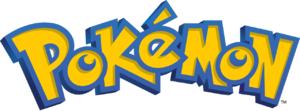
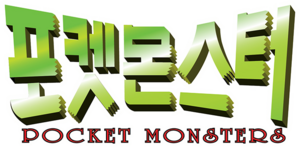
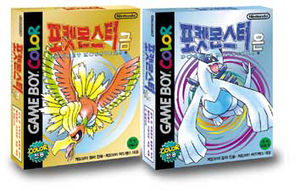
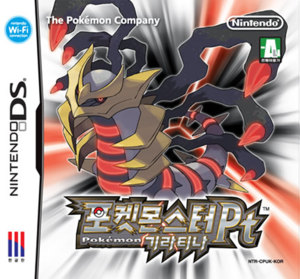



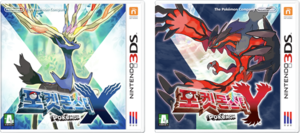












![Masters Ryota Otsubo & Park Se-jun pose with their signature Pokémon[16]](https://archives.bulbagarden.net/media/upload/thumb/a/a7/Ryota_Otsubo_and_Park_Se-jun_-_Korea-Japan_Friendly_2018.jpg/180px-Ryota_Otsubo_and_Park_Se-jun_-_Korea-Japan_Friendly_2018.jpg)
